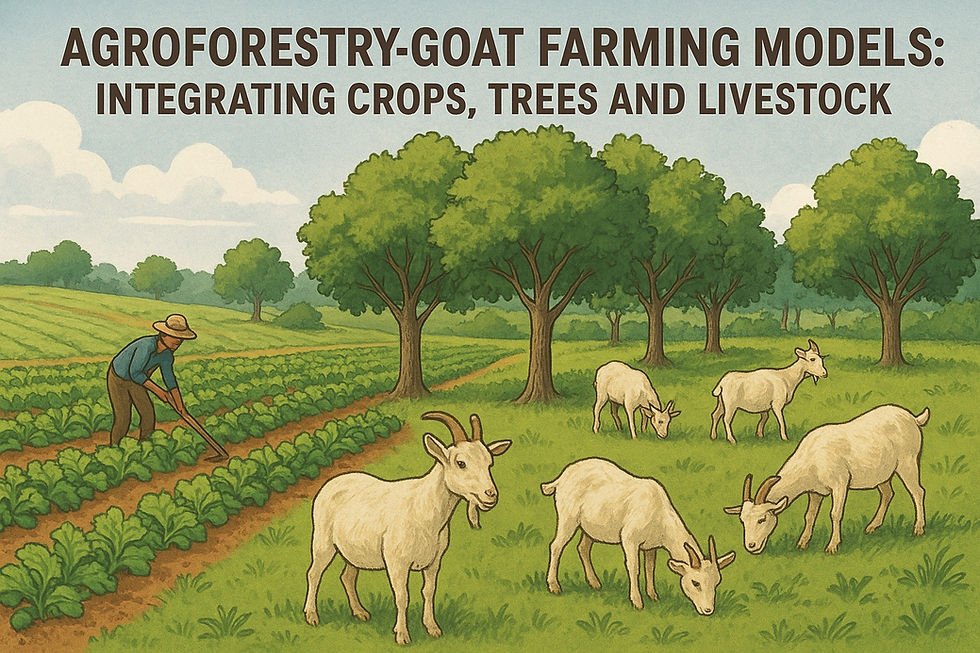Women, Livestock, and Empowerment in Rural Nepal
- Global Services TGT
- May 23
- 3 min read
Updated: Jun 10
In the villages nestled between Nepal’s hills and plains, a quiet revolution is taking place—led by women, cows, goats, and buffaloes.
Livestock in rural Nepal is more than a source of food or income. It’s a gateway to empowerment, especially for women who are often excluded from land ownership and formal employment. Through animal husbandry, women are not only feeding their families—they’re building independence, leadership, and economic resilience.
The Invisible Backbone of the Livestock Sector
In many rural households, women are the primary caretakers of livestock—feeding, milking, cleaning sheds, collecting fodder and even providing basic veterinary care. Despite this, their contribution is often undervalued or overlooked in policy, data reflective and decision-making.
“I don’t own the land, but the goats are mine. This is how I send my children to school,” says Parbati, a goat farmer from Gorkha.
Livestock often serves as women’s entry point to economic participation, especially in regions where cultural norms limit their mobility or access to paid work.
Small Animals, Big Impact
Goats, chickens, and pigs are among the most commonly reared animals by women. These small livestock require relatively low investment and can be managed close to home, making them ideal for women juggling household and childcare duties.
Women-led livestock enterprises have ripple effects:
Income generation: Regular sales of milk, meat, eggs, or young animals provide steady earnings.
Nutrition improvement: Families with livestock tend to consume more protein-rich foods like milk, eggs, and meat.
Access to credit: Livestock can act as collateral, enabling women to take loans from cooperatives or microfinance/ financial institutions.
From Farmers to Entrepreneurs
Across Nepal, women are not just keeping animals—they’re running businesses.
In the Karnali region, women’s goat cooperatives have helped entire communities recover from poverty.
In the Terai, dairy groups managed by women have established cold storage chains, milk collection centers, and links to regional markets.
In the hills of Dhading and Nuwakot, women-led groups now offer training in improved breeding, feed management, and disease prevention.
With training and support, women are moving from the “informal” role of livestock caretakers to becoming recognized livestock entrepreneurs.
Empowerment Beyond Economics
The impact of livestock extends beyond money—it boosts self-confidence, decision-making power, and social standing.
Women involved in livestock programs report:
Greater say in household decisions
Improved status within the community
Enhanced ability to participate in local governance and cooperatives
In some cases, livestock ownership has even played a role in reducing gender-based violence, as women gain more financial independence and community support.
Challenges and the Road Ahead
Despite progress, many barriers persist:
Lack of land ownership limits women’s access to formal credit or extension services.
Workload burden remains high, with women balancing livestock, farming, and household chores.
Limited access to markets, training, and technology very restricts growth.
To truly empower women, interventions must go beyond giving goats or cows—they must include:
Gender-sensitive training
Access to financial services
Inclusion in policy planning
Supportive community norms
The Future is Female—and Four-Legged
When a woman gets a buffalo, she doesn’t just get milk—she gets the means to send her daughter to school. When she joins a goat cooperative, she doesn’t just gain income—she gains voice, confidence, and connection/ network.
Empowering women through livestock is not charity—it’s smart, sustainable development.
As the old Nepali proverb says, "Jasko gaai usko maya"—Who owns the cow, owns the love. In today’s Nepal, more and more women are claiming both.



Comments